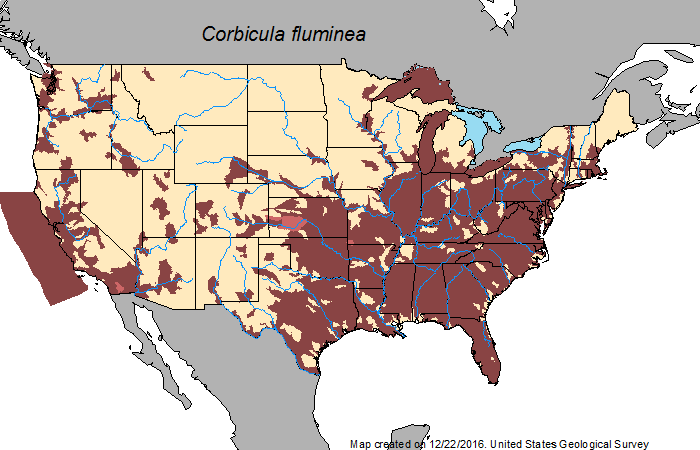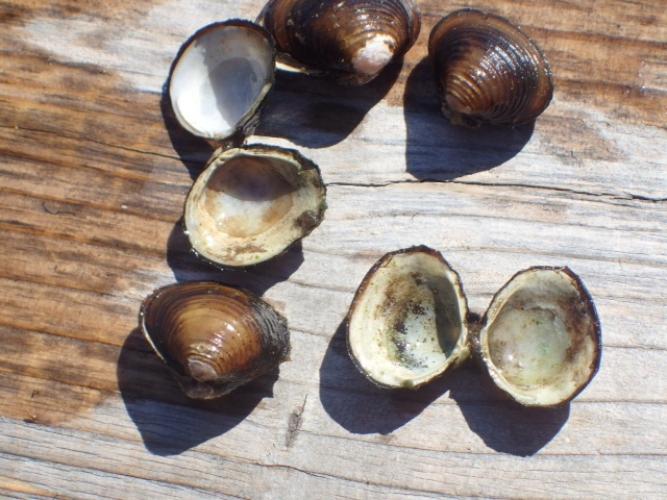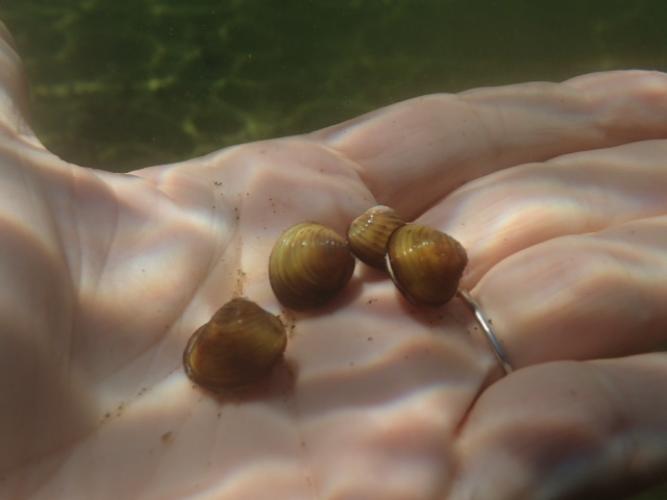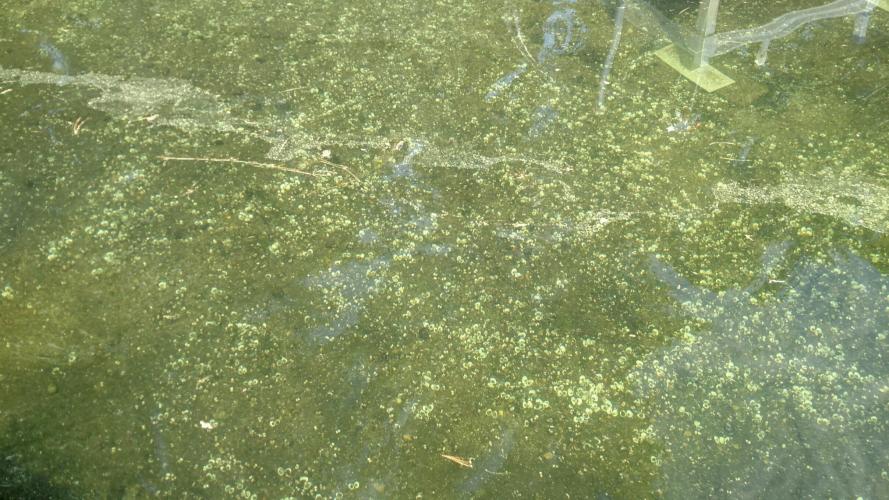Asian Clam
Identification
Asian clams have thick, triangular shells with deep and very distinctive growth rings. They are typically small, averaging less than an inch in diameter, with the largest individuals rarely exceeding 2 inches. Shells can be pale brown to greenish brown to a darker brown or almost black in color. The inside of the shell can be pale white to a deep purple.
Asian clams are deeper-bodied (more spherical) and have more symmetrical shells than native bivalves of the Northeast. Native Sphaeriidae (fingernail clams) are similar in appearance, but are flatter and have more asymmetrical shells. Also, the growth rings of an Asian clam are easily discernible and can be felt on an Asian clam, whereas fingernail clams will be smooth to the touch.
Biology
Origin
Asian clams are native to temperate and tropical regions throughout much of Asia and Africa, as well as the eastern Mediterranean and parts of Australia.
Habitat
This species occurs in both lake and riverine systems, where it prefers areas with sand and gravel substrates. Although they are a hardy and adaptable animal, they are rarely found on hard surfaces or in excessively silty areas. They are also extremely sensitive to low oxygen conditions, which may limit their spread and survival in deep areas of lakes or in rivers or streams that are not well oxygenated. Asian clams can tolerate a wide range of temperatures, but require water temperatures of roughly 60 degrees F or higher for reproduction.
LifeCycle
Typical of many aquatic invasive species, Asian clams are prolific and are capable of rapid growth and spread. They are hermaphroditic and therefore capable of self-fertilization, so a single individual can release hundreds of microscopic larvae per day under favorable environmental conditions. Adults can also release sperm into the water for sexual reproduction. Larvae are free-floating for a period of time, during which they can travel considerable distances in water currents, and then settle to the substrate.
Asian clams use a siphon-like feeding tube to filter feed on particles in the water column, and can also use its fleshy foot appendage to feed on detritus in the sediment.
Vermont Distribution
Asian clams were documented in Lake Bomoseen, Vermont, in 2016, which is the only known infestation in the state. Elsewhere, they have invaded many waters throughout the U.S.

How You Can Help
For most aquatic invasive species, humans are the primary vector of transport from one waterbody to another. Many of these nuisance plants and animals can be unknowingly carried on fishing gear, boating equipment, or in very small amounts of water in a watercraft. The easiest and most effective means to ensure that you are not moving aquatic invasives is to make sure that your vessel, as well as all your gear, is drained, clean, and dry.
BEFORE MOVING BOATS BETWEEN WATERBODIES:
-
CLEAN off any mud, plants, and animals from boat, trailer, motor and other equipment. Discard removed material in a trash receptacle or on high, dry ground where there is no danger of them washing into any water body.
-
DRAIN all water from boat, boat engine, and other equipment away from the water.
-
DRY anything that comes into contact with the water. Drying boat, trailer, and equipment in the sun for at least five days is recommended. If this is not possible, then rinse your boat, trailer parts, and other equipment with hot, high-pressure water.
Interested in monitoring for aquatic invasives?
- Join the VIPs! Vermont Invasive Patrollers help search for new infestations so we can respond immediately and prevent them from becoming established.
For more information, check out this video from the Vermont Fish and Wildlife Department.
Citations
Penn State University, Asian Clam
Invasive Species Compendium, Asian Clam
Morton, B. 1986. Corbicula in Asia - an updated synthesis. American Malacological Bulletin, Special Edition No. 2:113-124.
New York Invasive Species Information, Asian Clam
McMahon, R. F. 1999. Invasive characteristics of the freshwater bivalve Corbicula fluminea. Pages 315‐343 in R. Claudi and J. H. Leach, editors. Nonindigenous freshwater organisms: Vectors, biology, and impacts. CRC Press, Boca Raton, FL.


